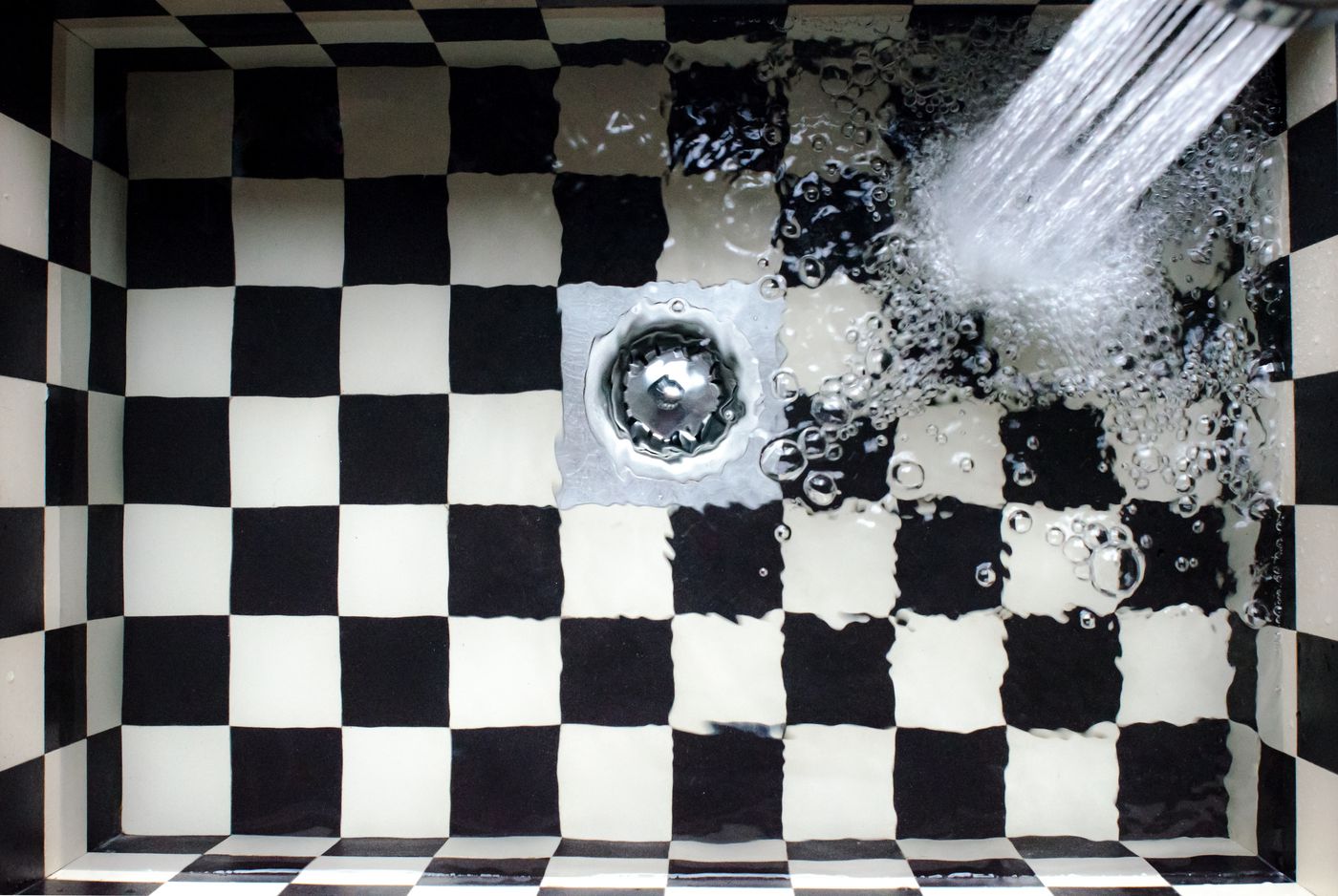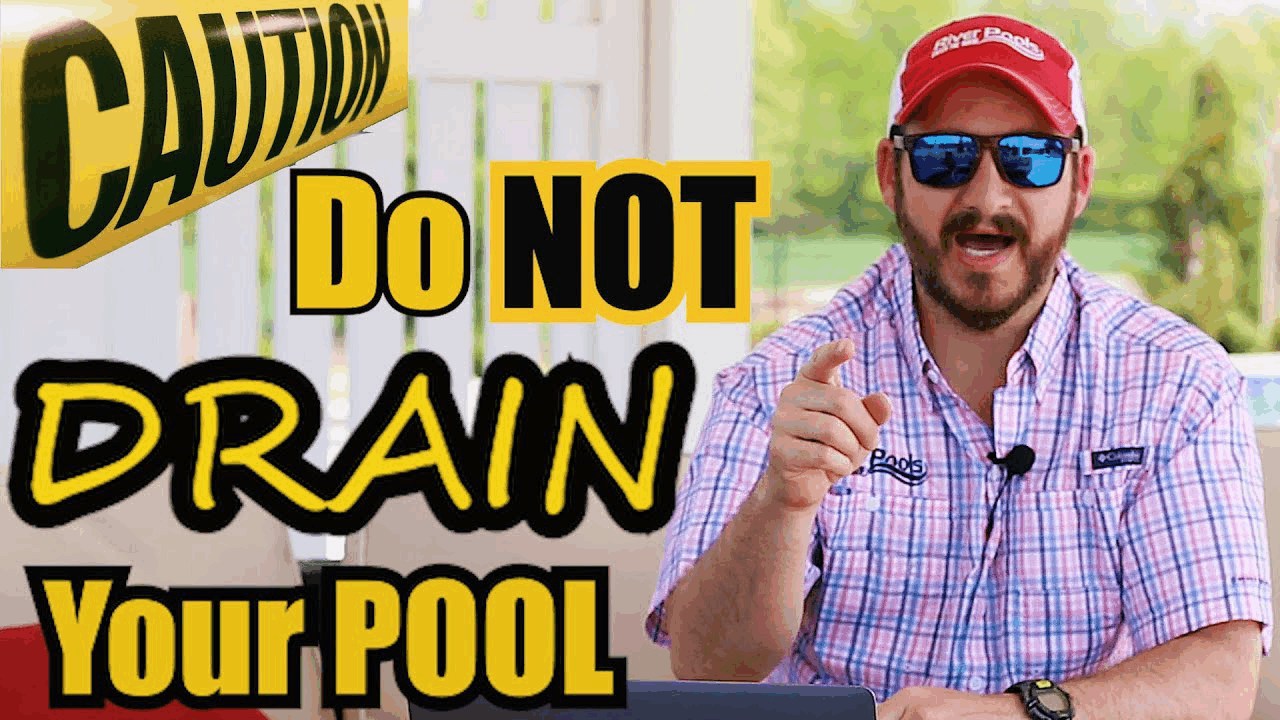
3 Reasons NOT to Drain a Fiberglass Pool!
Fiberglass Pool Information | Installation & Construction | Pool Design Guides

It’s hard to go wrong with fiberglass pools. They’re easy to maintain, they use very few chemicals, and they have the lowest lifetime cost of any type of pool.
However, there is one way fiberglass pool owners can screw all that up: by draining the pool without professional help.
Every year we hear accounts (not from our customers) of folks intentionally draining fiberglass pools for various reasons. I’m here to tell you that’s a big no-no!
Should I drain my fiberglass pool?
Avoid draining your fiberglass pool if at all possible. You do not need to drain your fiberglass pool for dirty water, a new home, or a foreclosed or abandoned home. If you do need to drain it, hire a professional. Make sure to check the groundwater, brace the pool, and have a sump pipe and gravel backfill.
Here are 3 common reasons people think they need to drain their fiberglass pools:
1. Dirty, nasty, stanky pool water (yes, I used the word “stanky”)
An ill-informed fiberglass pool owner may mistakenly believe that draining and refilling the pool is required, or simply easier, than cleaning the pool manually.
It’s a rare case indeed that a fiberglass pool needs to be drained for cleaning…possibly after a flood or other natural disaster…or maybe after years and years of neglect.
But for the most part, a fiberglass pool will be crystal clear within a matter of 1–3 days of adding chemicals and vacuuming.
2. Someone moves into a home with a fiberglass pool
We take time to educate our customers of the importance of not draining the pool.
However, we have had an instance or two when someone else purchased a home with one of our pools and the new homeowner drained the pool for some reason…again, big no-no!
(We’re now printing labels to put on filter systems to prevent this from occurring in the future.)
3. A foreclosure home that’s been abandoned for years
When someone takes on the task of whipping one of these properties back into shape, they have a major task on their hands. Talk about a to-do list!
Imagine what a pool that’s been sitting for 2-3 years looks like: it seems a no-brainer to simply drain and clean it…wrong-o!
Don’t go there, not without professional assistance anyway.
What type of damage are we talking about here?
Well, rumor has it that fiberglass pools pop up.
I’m not saying that’s impossible, but I can say that after over 600 installations over the past decade, we have yet to have that happen to one of our pools after the project is completed.
The damage that we have seen comes in the form of bulging side walls and floors, and splits in pool floors…all of which can be repaired.
But my point is, why incur any unnecessary damage at all? Leave the bloody thing full and we have nothing to worry about.
These principles apply to all types of pools. Concrete pools will actually float. Vinyl liners bubble and float as well. It’s necessary to take these precautions with any inground pool.
(For an in-depth comparison of the three pool types, check out our free ebook "Comparing Fiberglass, Concrete, and Vinyl Liner Pools in the Modern Age.")
So what do I do if the pool really needs to be drained?
If your pool really needs to be drained, contact a local fiberglass pool professional to do it for you, or at least give you some assistance.
Some pools are perfectly fine to drain, but only some.
A good percentage of fiberglass pools will incur some damage if the pool is drained without taking proper measures.
What are “proper measures”?
First, determine how much water is around the outside of the pool.
Some people mistakenly believe that because there was no water during their pool's excavation, that the hole remains dry at all times.
This is far from the truth.
The hole around the outside of your pool is no different from any other hole in your yard…it fills with water.
Your type of soil will determine how long water remains in the cavity outside your pool. Sandy soil is most permeable; clay is least.
If there is water around the outside of the pool, the water either needs to be removed, or if this is not possible you will have to wait until a drier part of the year when the hole is dry.
In our unique advanced installation techniques (part of The River Pools Way), we install a sump pipe that allows you to take the lid off, look down the hole, see how much water you have, and get rid of it easily.
Second, properly brace the pool.
I won’t go into how to do this, but it’s good practice to brace fiberglass pools when draining them because they are engineered to remain full of water.
The design of the pool will determine where and how many braces to use.
Third, consider the type of material used to backfill around the outside of the pool during installation.
Clean, crushed stone is the ideal material (again, a key component of The River Pools Way)—it drains well, and the point-on-point friction helps it stay in place. This helps keep bulges from developing in the side walls of the pool.
We're confident that we can safely drain a fiberglass pool if it has a sump pipe and stone backfill.
Still, it's best not to drain the pool unless it's absolutely necessary. And you should never do it by yourself.
So, whether you have a pool with nasty water, have just moved into a home with a fiberglass pool, or find yourself in a major renovation project with a fiberglass pool, just know that draining the pool without professional assistance is not an option.
River Pools manufactures world-class fiberglass swimming pools for installation across North America and have a wide variety of models to choose from.
Check out all our blog articles about maintenance for advice on any issues you may encounter.
We know pools, and we’re here to help you!
Up Next: How and When to Drain a Fiberglass Pool
Editor's note: This blog article was updated on June 11, 2020.
Editor’s note (5/3/24):
This article was written by Jason Hughes, (Founder, River Pools Virginia, Genesis Course Instructor). The opinions expressed are those of the author. Any pricing information is based on information that was readily available at the time of publication.
Editor's Note: This article was originally written by Jason Hughes on November 22, 2010. Any opinions expressed are those of the author. Any prices referenced were based on information that was readily available at the time.
River Pools is a brand of inground fiberglass pools produced in a manufacturing facility in Fortville, IN. While our expertise is in manufacturing fiberglass pools, we have access to a network of installers with expertise relating to project design, installation, and pool service. We often tap into this knowledge base and share information freely with homeowners, just like you, considering installing a swimming pool in your backyard.




